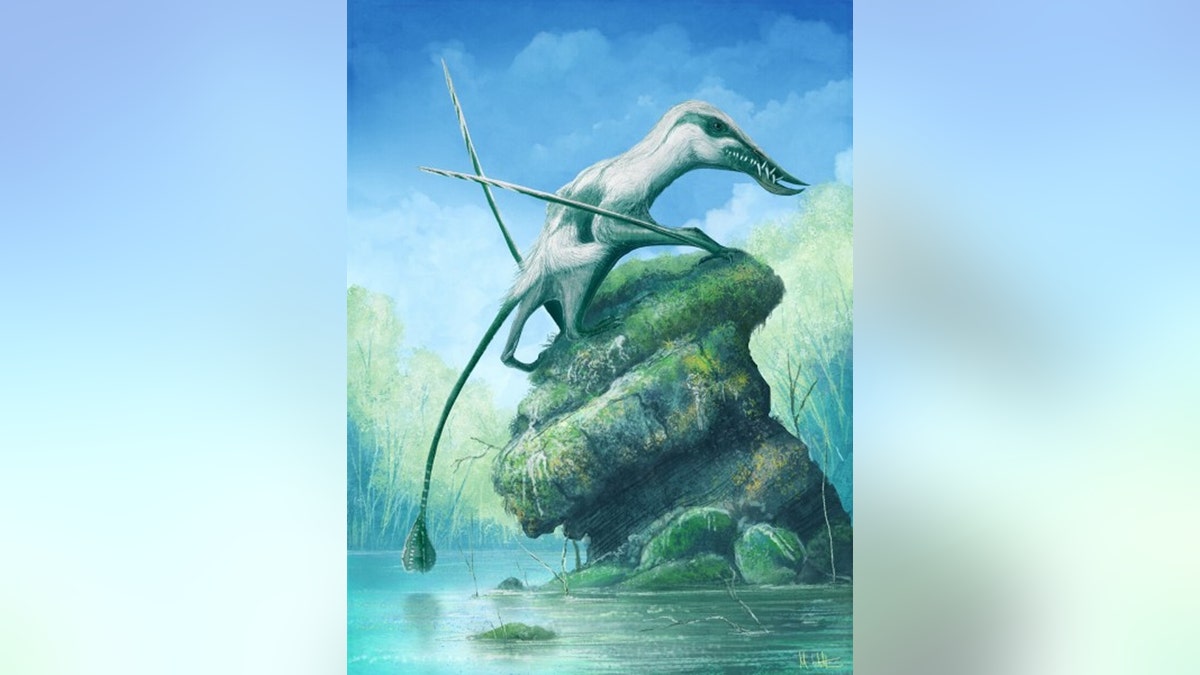
((Credit: Copyright Mark Witton))
My, what big teeth you have.
Pterosaurs may have scared frenzied tourists in 2015's "Jurassic World," but a newly classified species of the ancient reptile may have scared the wits out of its prey during the Jurassic era because of its massive fangs, a trait largely unseen in any of its relatives.
Known as Klobiodon rochei (which means "cage tooth"), the species was discovered after bone fragments were taken from Stonefield Slate — an area, approximately 10 miles northwest of Oxford, described as a "rich source of Jurassic fossils." It was where the Megalosaurus, the first dinosaur discovered in Britain, was found.
CLICK HERE TO GET THE FOX NEWS APP
"Klobiodon has been known to us for centuries, archived in a museum drawer and seen by dozens or hundreds of scientists, but its significance has been overlooked because it's been confused with another species since the 1800s,” University of Portsmouth paleontologist Michael O'Sullivan said in a statement.
The flying reptile lived approximately 166 million years ago and had inch-long teeth that locked together, similar to a cage, Dr. O'Sullivan added. "Its large fangs would have meshed together to form a toothy cage, from which little could escape once Klobiodon had gotten a hold of it," he said.
Klobiodon gets its moniker from famed comic book artist Nick Roche. The research has been published in the scientific journal Acta Palaeontologica Polonica.
This newly identified species of pterosaurs likely hunted fish and squid, thanks to its massive fangs, O'Sullivan added. A 2007 study on pterosaur eating habits suggests that the species may have fed like "modern-day 'skimmers,'" flying "along the surface of still bodies of water scooping up small fish and crustaceans with their submerged lower jaw."
With a wingspan approaching 6.5 feet, the K. rochei was an imposing creature in the air and this species will help understand how animals lived in the region when the climate was significantly warmer than it is today.
NEW GIANT DINOSAUR DISCOVERED IN RUSSIA
“The Stonesfield pterosaurs are rarely pretty or spectacular, but they capture a time in flying reptile evolution which is poorly represented globally," O'Sullivan said in the statement. "They have an important role to play in not only understanding the UK’s natural history, but help us understand the bigger global picture as well.”
Follow Chris Ciaccia on Twitter @Chris_Ciaccia




















